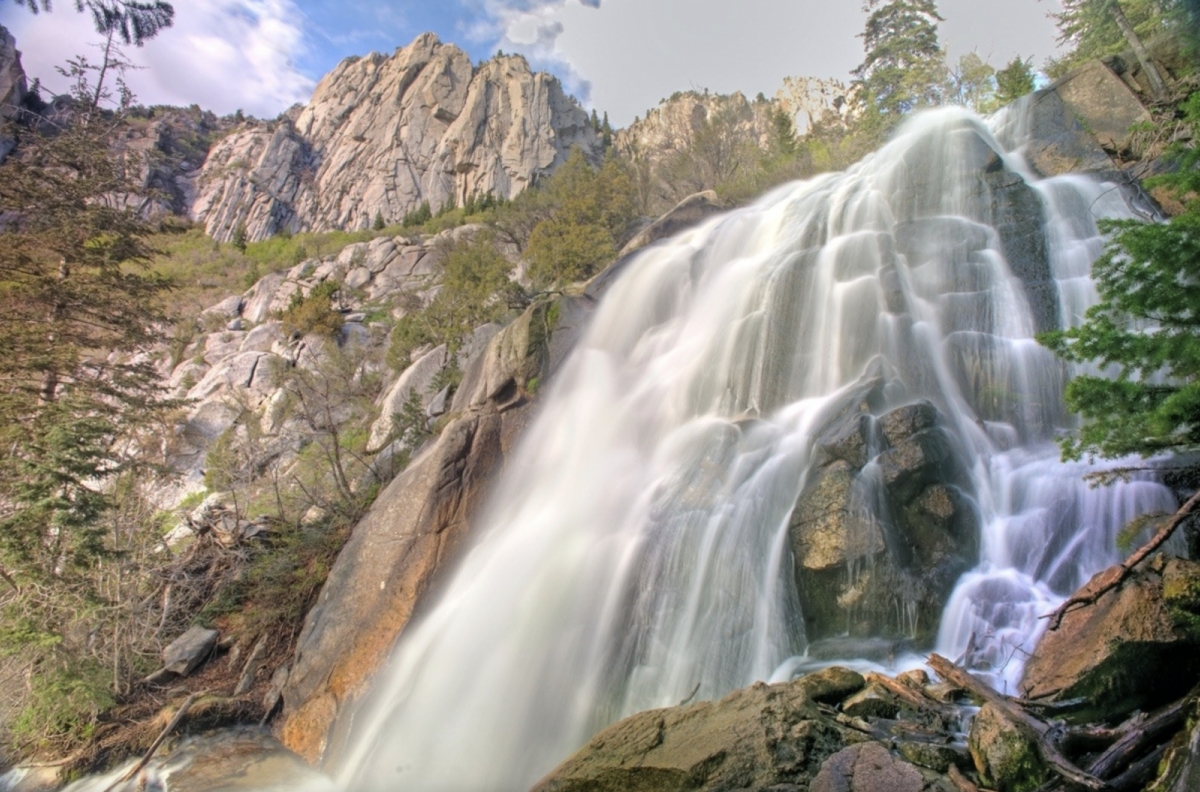Motorized vehicles, phones, and computers are technological advances that we have invented to provide convivence and comfortability, enhancing our daily lives. While we use them intrinsically, human subsistence is captured in these five necessities: air, water, food, shelter, and clothing. Some of these necessities are more important to our survival over others, if one or more are removed from our daily lives we enter a standard of living that does not meet our needs. If this degraded standard is prolonged death is imminent. Climate change— a phenomenon that is putting strain and challenging our access to these necessities is occurring globally. Locally, to preserve a high standard of living and ward off the impacts of climate change we need to be protecting undeveloped lands in Utah and identifying local human pressures perpetuating climate issues, in turn, safeguarding our necessities.
In August 2019, the Intergovernmental Panel on Climate Change released a report called “Climate Change and Land.” As reported by the Desert News, we need to take action protecting local land as it bolsters resiliency and buffers us from the impacts of a changing climate. Utahns need to support and pass legislation that zones off and offers further protections to intact landscapes. Locally, in Salt Lake County, there is growing support for legislation (Central Wasatch National Conservation and Recreation Area) that would protect 80,000 of public land in the Central Wasatch mountains from further fragmentation. Within the land proposed for designation there are watershed areas. Protecting watershed areas leaves waterways uncontaminated from chemicals and debris making great drinking water for Utah's growing population. Watershed areas also help fight desertification, preventing erosion which makes the land less fertile.
Furthermore, identifying current and future vulnerabilities that exacerbate climate-related impacts and then implementing more sustainably efficient policies will help our environment respond to a changing climate. An article released by Reuter’s summarizes the results of a think tank conducted by the Center for American Progress, titled, “How Much Nature Should America Keep?” The article discloses that in America a football field worth of natural land is lost every 30 seconds, and over a 16-year time-period 24 million acres of natural land has been lost. Development in America is occurring at rapid rates that do not allow the environment and landscapes being affected to adjust to the new conditions, hindering their ability to recover and protect us and itself from catastrophic events. Locally, failure to put in place policies that prioritize watershed health, resilient forests and protect wildlife habitat could result in catastrophic wildfires, flooding, loss of species and degraded water quality.
Coincidently, setting a goal of permanently protecting at least 50% of Utah’s land will ensure we will be prepared to deal with the impacts of climate while working to realize other critical actions to sustain life as we know. Referring back to the IPPC report, one of the main takeaways was establishing better and more comprehensive forestry management practices. Utahns need to protect forest lands which make up roughly one-third of the state. We can start this conservation effort locally by protecting forestland in the Central Wasatch. In a conservative estimate, 30% percent of forestland in the Central Wasatch has been lost to development. This does not include the possible loss of land associated with road fragmentation, and pollution from transportation and development.
Collectively, trees and other plants within forestland act as a carbon sink; a natural buffer that sequesters the atmospheric greenhouse gas carbon dioxide; which is a huge contributor to climate change. Plants absorb carbon dioxide naturally through photosynthesis:
CO2 (carbon dioxide) + H2O (water) + photons (light energy) → [CH2O] (carbohydrate) + O2 (oxygen)
This process may look daunting, but can easily be understood using the analogy of baking a cake. The raw ingredients or inputs of photosynthesis are carbon dioxide and water. Once the ingredients are mixed together and put in the oven or exposed to sunlight, eventually a cake will be produced or in this case carbohydrates and oxygen. The oxygen is released into the environment, however, similarly how we consume cake we just made, plants consume the carbohydrates (transformed carbon dioxide) and the carbohydrates will be stored within the trees for the remainder of their lifetime.
Forests play an important role in preventing, buffering, and restoring the impacts of climate change. The Uinta-Wasatch-Cache National Forest, containing over a net acreage of 2,169,596 acres of forested land, may be aging but is still no exception. Right now, only seven wilderness areas have been established. These wilderness areas only make up 25% of the forest’s acreage. We need to strive to increase protections in this forestland range! While some people do not support protecting public land containing forests locally and nationally due to their worry of poor forest management creating hazardous wildfire conditions. I see this as a huge mistake and a superficial excuse because upon further investigation statistics from Utah Fire Data shows that in 2017 92% of wildfires were started in developed areas and were caused by humans.
In this post, I have discussed many issues and opportunities the Wasatch is currently facing. How much more of the Wasatch are you willing to sacrifice? How long will it be before it’s too late to protect pristine Wasatch land? Let’s take action today! For a hospitable future, prosperous society, and a cleaner Utah it is imperative that we start taking action in protecting Utah land— public land— land in the Central Wasatch. These are critical areas that are fragile to development, yet while intact they play major roles in the defense against climate change.
You can support the protection of Utah land by engaging with your Congressional representatives and legislatures by writing or calling them. Save Our Canyons also has many opportunities for you to voice your support and steward the protection of the Central Wasatch. You can become a member or donate, support the NCRA via attending the Central Wasatch Commission meetings every 3rd Wednesday of the month at Cottonwood Heights City Hall and sign our petition, or even getting out in the wilderness and volunteer at one of our Wilderness Stewardship Projects or contact our Education and Stewardship Coordinator Luke Golden at ). Thanks for your support, LET’S SAVE OUR CANYONS!


